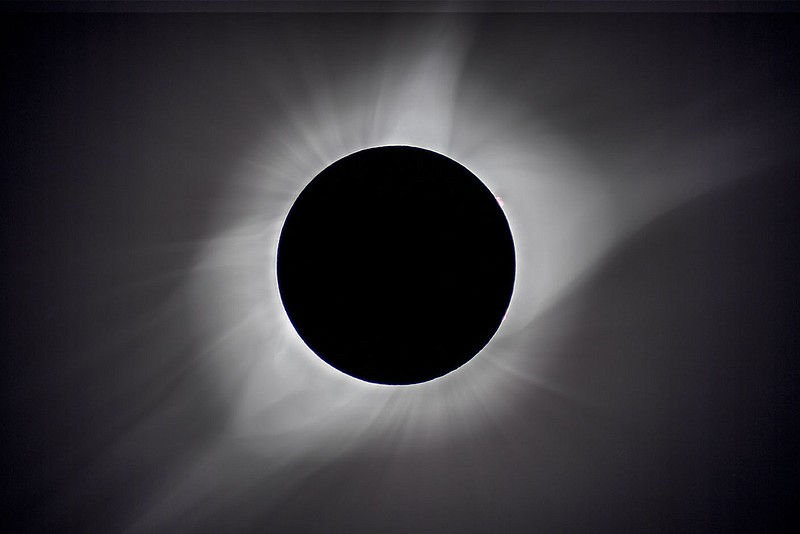On April 8, 2024, there will be a total eclipse of the Sun that will be visible near where most of the readers of this column live. NOW is the time to prepare for this event. In Arkansas, the path of the eclipse will pass over central Arkansas and will probably best be seen a bit east of Russellville.
As a veteran of the August 2017 total eclipse, I learned a few things I want to pass on to those who will make a serious attempt to see it.
There will be many open fields across Arkansas that would be ideal to watch the eclipse. I don't know about these and their availability on eclipse day. Viewing from a field owned by someone else will probably require permission and perhaps a fee. NOW is the time to scout such a location because if you are planning to use such a site, others are too!
I recommend you get a good book about the eclipse and read it very carefully, particularly if this is your first eclipse. You must understand, beforehand, what will take place so you can be ready for it. Preparedness is the key to having a good eclipse experience.
My brother and I read several such books over a period of a year and planned for the eclipse for over a year. We are experienced observers of sky phenomena, but we had never seen a live eclipse and we knew the eclipse would happen very quickly. [The eclipse of 2017 was about 2 minutes, 15 seconds long for totality although the Moon's silhouette could be seen before and after totality for about 2 hours. The April eclipse of 2024 will last a bit more than 4 minutes from Arkansas.]
If I were planning an ideal trip to see the eclipse, I would go to the observing spot sometime the day before the eclipse and either stay with a relative or friend or secure commercial lodging. Why get there a day before? Because something will go wrong and you will need time to cope with the unexpected. Getting into a last-minute rush takes some of the fun out of the experience and you will be competing for the highway and your observing spot with everyone else who is just arriving at the last minute!
Except when the Sun is totally covered by the Moon, you must wear eclipse glasses for observing pre-and-post totality events! During totality itself you may remove the eclipse glasses and view the Sun totally eclipsed, but do not remove the eclipse glasses at any other time! Your children will need to obey these instructionsm too! Check to see that they have them on when looking at the sun! Eclipse glasses will be sold by many vendors. It is good to buy yours perhaps weeks before the eclipse, because there was a run on these the week before the 2017 eclipse and some couldn't get them.
For those planning to photograph the eclipse, you will need a solid tripod. You will want to take as many photos as you can, as fast as you can and a tripod will really steady things down. Many will try photographing the Sun with just the normal lens already on their camera. If you do this, the Sun's image will be very small. I would recommend a 300mm telephoto at a minimum. I will be shooting at more than 400mm from a site near Sulfur Springs, Texas. For those more advanced, I recommend a good equatorial mount that will track the Sun as the Earth turns. [For you folks, get there before night fall the day before so you can get good polar alignment.] I think you will need a remote shutter cable too, so you won't shake the camera when shooting. You will be very excited and awestruck and the tripod will help. Be sure to get very careful focus -- focus on any sunspots that may be on the Sun's face. If there are no sunspots, use the edge of the Sun for sharp focus.
When I took my eclipse photos, I set my camera at ISO 200 and started shooting at 1/2000th second. I then worked back from there, ending with a 2.5 second exposure. I took more than 300 images in two minutes! However, for the final photograph, I only used 18 of those photos, which were then stacked by a professional scientific photographer from Caltech. I have included a photograph of 18 images, stacked one on top of the other, which shows the corona as best as I could get it.
If I had any success at all, it was because of careful and lengthy preparation! Things happened very fast and I needed to have a clear picture in my mind as to what I would do beforehand. A sort of panic can set in if you haven't planned and this is never happy.
I will have further news about this upcoming eclipse as it approaches.
Dr. David Cater is a former faculty member of JBU. Email him at [email protected]. The opinions expressed are those of the author.

